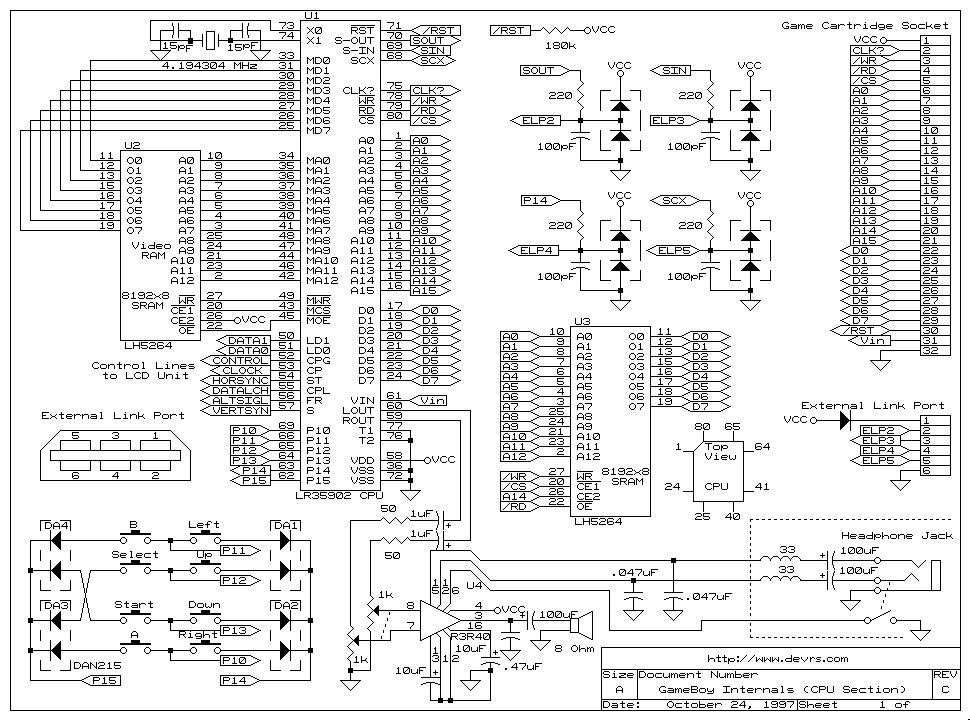I bought a DMG on eBay from a guy who had tried to backlight it but apparently gave up. He listed that the screen worked, no sound, left on d-pad broken, possibly a broken bivert chip. He also included a second CPU board which he stated was "untested," and he had already removed the reflective "sticker" from the back of the LCD panel.
I get the package and indeed left on the d-pad does not work, every other button works, up, down, right, a, b, select start. I fix the bivert chip problem, he had messed up soldering it on and it looks like he managed to mangle one of the traces so that the right of the two wasn't actually making any contact, and the wire leading to ground had broken loose. To repair the sound he had attempted to replace the pot with a monaural pot, with some effort I was able to remove this and replace it with a stereo pot, and whether through his action or mine some of the traces were "messed up," but the audio is working again.
As for the dpad, I tried everything I could think of to get it working, cleaning the contacts etc, and I tried to trace all the connections from it to other points on the LCD board; I eventually swapped over to the "untested" CPU board he had included and now all of the buttons work. I've read that if the input on the CPU is fried then both left and the B button won't work, I guess they use the same register, so I'm not sure if this is a CPU problem or not. I don't know if he ever attempted to separate the two boards while the unit was on.
I have a soldering iron and a multimeter, no flash carts or anything like that. I don't know if there are any connections I can test for continuity to see if there is a broken trace someplace, or if there is any way to test the CPU for damage. I'm hoping that there is something simple that I missed that one of you might have run across, and I'm hoping the fact that all of the other buttons being functional means that the CPU isn't damaged.
Sorry for being long winded about this but I wanted to give a complete picture of what's going on. I appreciate any help that I can get. It may seem strange that I want to fix this board when I have a second, functioning one that fixes my issue, but I just hate to throw away something that I might be able to salvage; especially when I already put work into fixing what he messed up. Thanks for any help you can give me.
